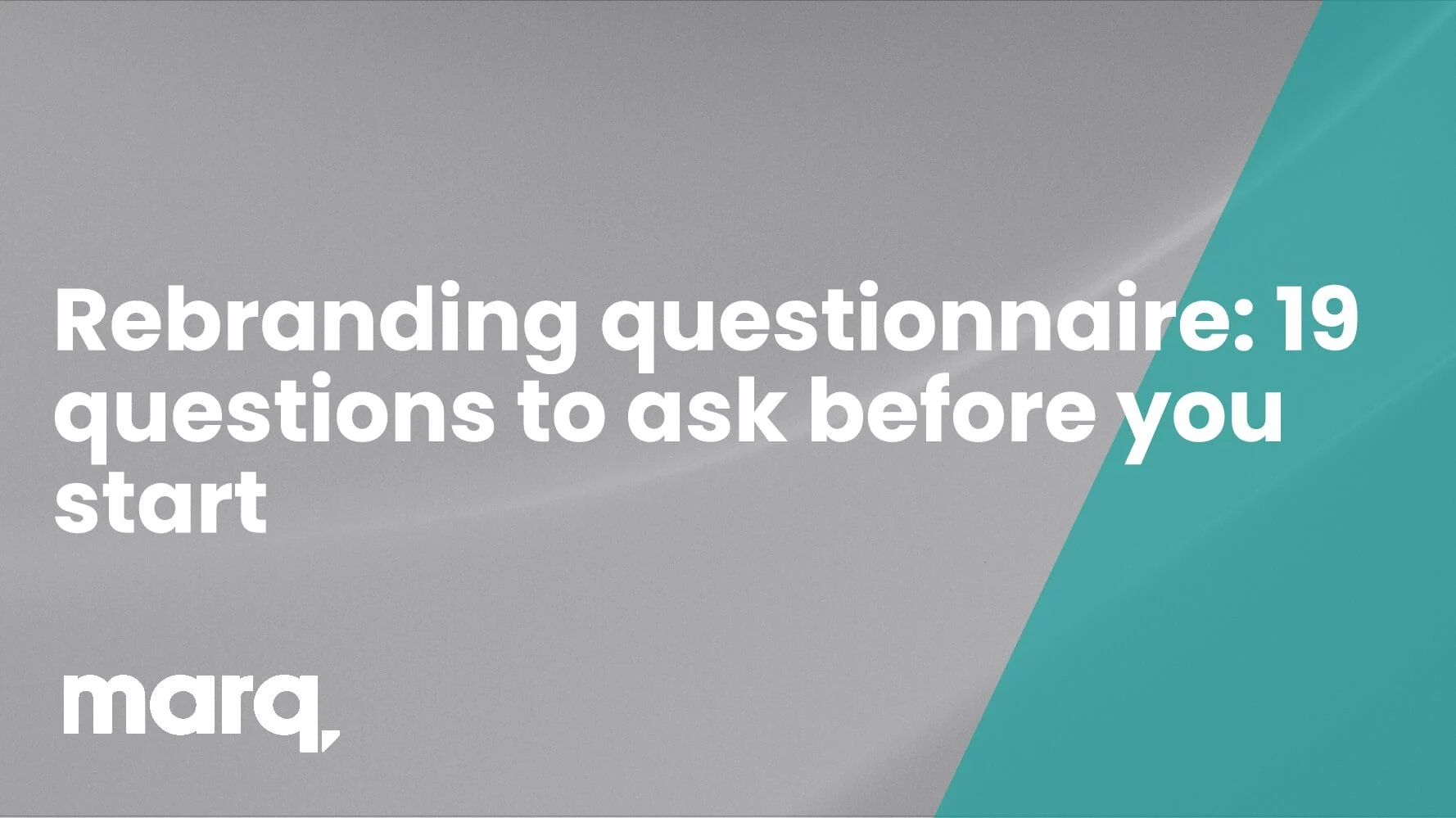Physics is to Albert Einstein as branding is to David Brier.
A walking, talking brand himself, David Brier graced our screens three weeks ago for a webinar that divulged the 19 questions every organization should ask before rebranding.
I have to admit, I expected all the cliché questions: Who is our audience? What is our core strength? Yadda, yadda, yadda. But David proved he isn’t a world-renowned rebrand expert for simply stating what I already learned in Marketing 101… he’s world-renowned for asking the kind of questions that require intense (organizational) introspection. Questions that actually make you think.
Intrigued? Watch the full webinar here and read to follow along.
David Brier’s draw can probably be attributed to his three decades of branding experience, but on a personal note, I think the bold, in-your-face personality may have a little something to do with it too. Case in point? “I’ve been compared to a triple-shot espresso.”
His words, not mine!
Now… sit back, relax, and let me take you on a journey through David’s mega-marketing mind as I summarize some of the insights we learned during his webinar. And remember, you can always just watch the recorded webinar in full if you’d rather hear it straight from him.
Why do companies rebrand?
Here’s a shocking fact:
For some reason, we as marketers can forget this minor detail. Entire populations who were once our brand loyalists don’t stay that way forever. They’re replaced by an entirely new generation of new human beings with new opinions and needs. Which means you need new messaging.
In David’s words: “With today’s technology, these changes are happening faster than ever. To stay relevant, sometimes the correct strategy is a rebrand.”
So we embrace the fact that the world constantly changes, we stay relevant, and we resonate with the new generations as they come. Easy, right?
Well, as David points out, companies repeatedly struggle to pull off an effective rebrand.
It’s that wall. No matter how hard you market and how targeted your campaigns are, there still seems to be a disconnect between you and potential customers.
The problem? Clichés.
David explained how certain phrases like “state of the art,” “knowledgable staff,” and “caring customer service” (who talks like that, anyway?) can alienate companies from their audience and be too predictable to hold interest.
More importantly, clichés distract from good branding.
Branding the right way
According to David, the definition of good branding is good differentiating. No surprise there, right? Stand out from the competition and potential customers will notice you more. As David reminds us: “Differentiating is not a luxury. You differentiate if you want to survive.”
You differentiate if you want to survive.
Now that’s a bold statement.
He’s got a point, though. The great thing about David is that he doesn’t make a bold statement without something to back it up. In this case, that something is a slew of real-world examples. Real brands that had real problems until he swooped in and differentiated the heck out of them. I’ll let you discover the intriguing before-and-after brand transformations when you watch webinar in full.
The 19 rebranding questions
The stage has been set. We understand why companies rebrand, what branding is, and why it matters. Now for the hard part—how to actually go through with a rebrand.
It’s about time we dive into the 19 questions, isn’t it?
I’ll cover the first five questions here. If you want the remaining 14, I’ll let you watch David reveal the rest himself.
Rebranding question #1: Why are we doing a rebrand?
Seems like an obvious question, but as David points out, many companies make the mistake of rebranding simply to rebrand—to be “prettier” and to change things up. But rebranding is not worth the time and money if it doesn’t revolve around strategy and relevancy.
Rebranding question #2: What problem are we attempting to solve?
Does your packaging get lost on the shelf? Is your product not valuable to customers once they get it? Figure out the problem you are trying to solve, and let rebranding help fix that problem. If you don’t have a clear objective to your rebrand, rebranding really won’t do you much good.
Rebranding question #3: Has there been a change in the competitive landscape that is impacting your growth potential?
As much as we’d like to think our brand isn’t impacted by the decisions of other brands, it is. No brand exists as an island. You always have to be watching the landscape around you, and be nimble and fluid in response.
Rebranding question #4: Has our customer profile changed?
Yesterday’s innovation becomes today’s normal, and new innovations can drastically change our customer profile. Don’t blindly base your strategy on information that could have been relevant for your audience five years ago but has no place in your brand today.
Rebranding question #5: Are we pigeonholed as something that we (and our customers) have outgrown?
Many times, businesses evolve as they grow. They start out with a certain focus, then shift that focus as time goes on. For example, a 25-year-old dance institution that still used a ballet dancer in their logo admitted to David that ballet now accounted for only 15% of their training. It’s a prime example of a brand pigeonholing themselves by not keeping up with their own evolution and growth in their branding.
As for the last 14 questions, they really are worth reviewing. David’s tips are chock-full of insights that get you to fight for your rebranding strategy—to really have a reason for how and why you’re doing it. A true rebrand should be hard—it should challenge your fundamental beliefs about your organization and spark new ideas of how to better hone in on the core value it provides.



